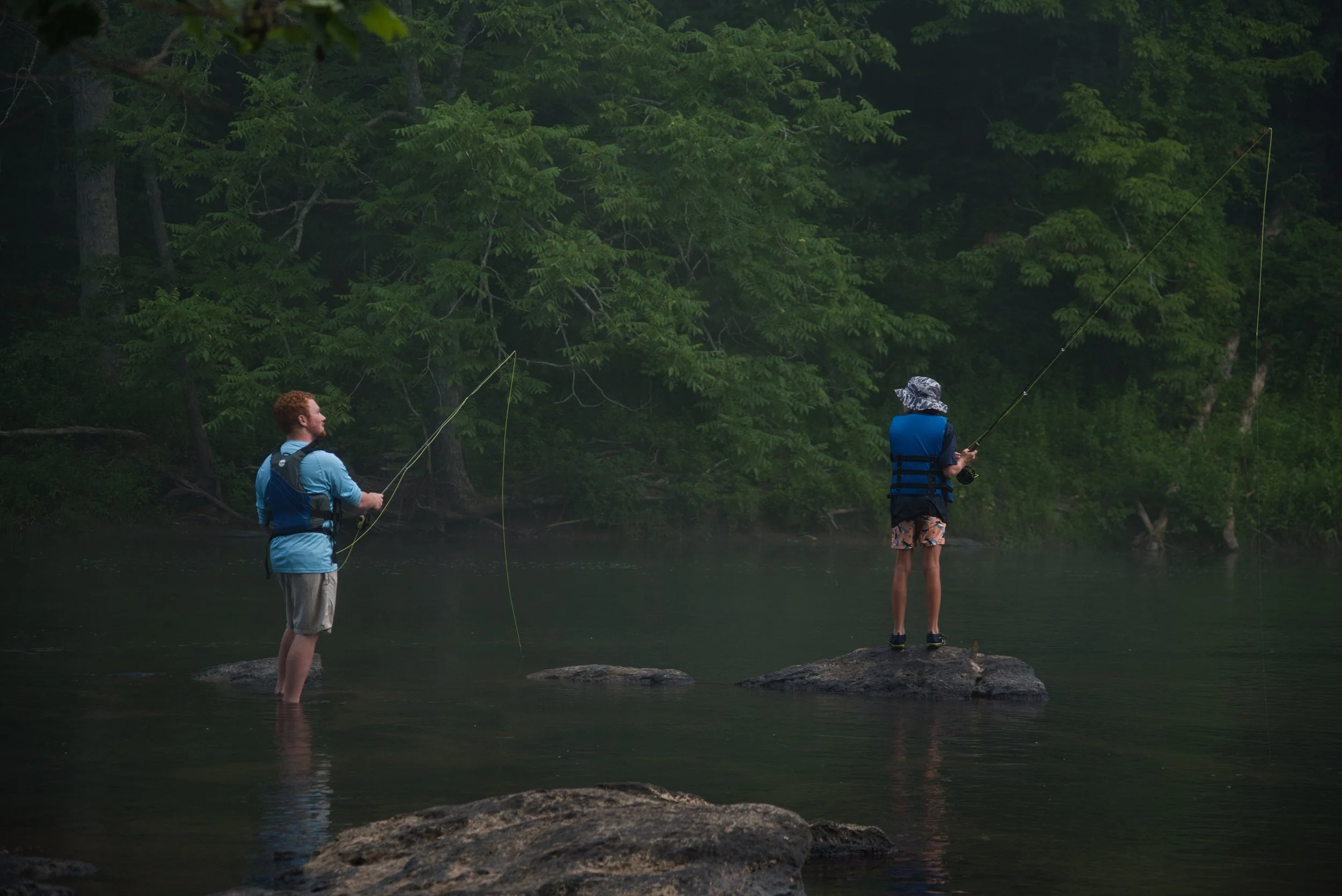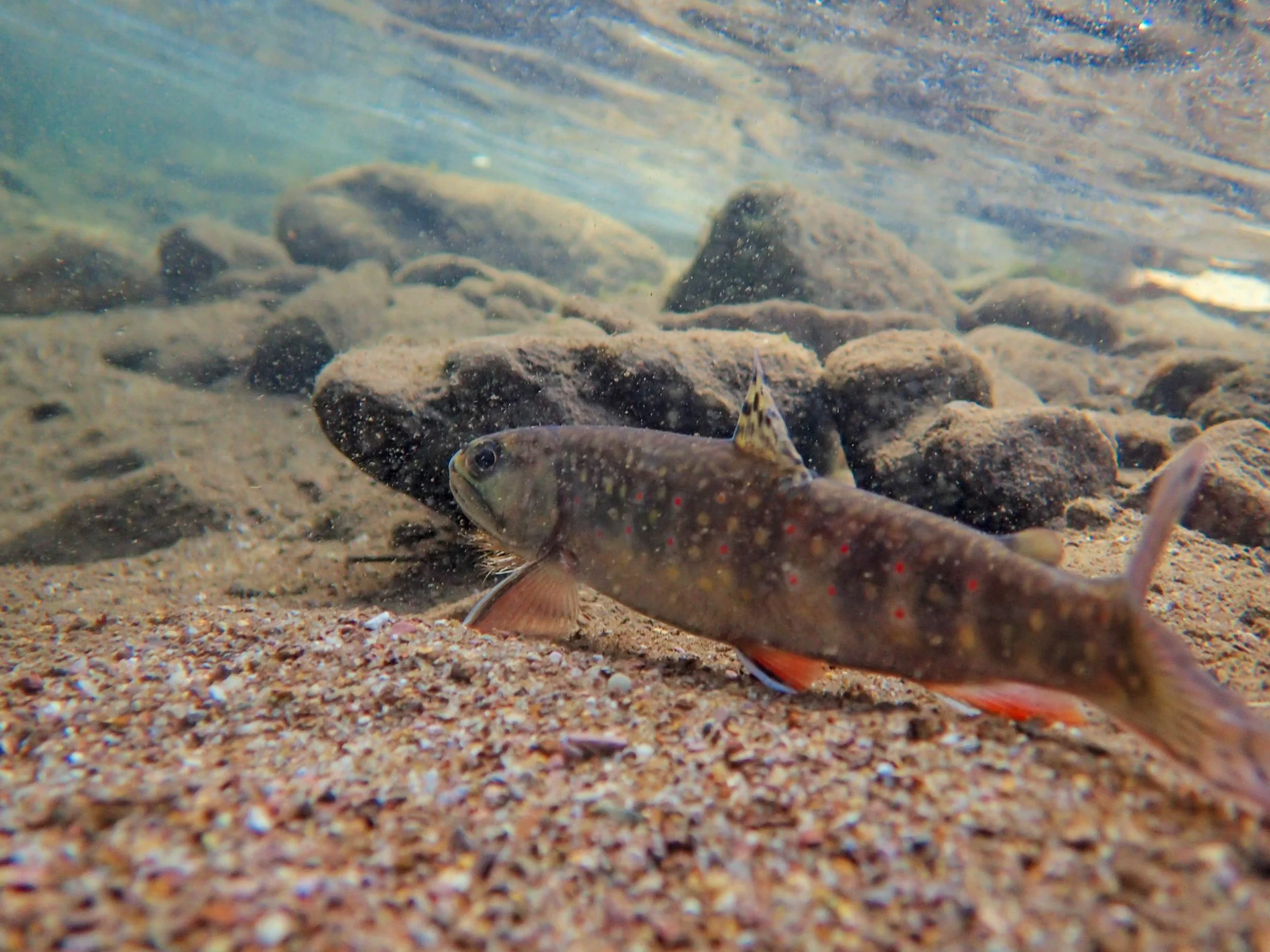Fifteen Fun Native Fish Facts!
Summer Fly Fishing Camp is back! Join us August 6-10 for a week of tying, casting, and catching! To celebrate the return of this beloved BRDC camp, here’s fifteen fun fish facts, all about some of the awesome freshwater fish found natively here in Virginia’s creeks, streams, and rivers!
1) There are 226 species of freshwater fish in Virginia.
2) Fish in the family Ictaluridae (the catfish family) do not have scales.
3) Fish in the genus Etheostoma (which includes many darters, though ‘darters’ is a broad term that applies to a few genuses) do not have a swim bladder! This helps them stay safe and sheltered near the bottoms of streams.
4) The Banded Sculpin, Cottus Carolinae, is nocturnal. They prefer to rest during the day, and hunt at night.
This Bluegill, a native member of the perch family, is so named for the silver-blue band and dark blue spot along the gill slit
5) There are 48 species of perch in Virginia (members of the family Percidae), including species of darters and dace. These beautiful, vibrantly colorful fish are referred to as “aquatic butterflies” or “living jewels.”
6) The Candy Darter, Etheostoma osburni, is a particularly colorful darter. Featuring bold red stripes across its blue, green, and yellow body, this rainbow of a fish would look right at home in a tropical coral reef. But it wouldn’t feel at home there - the Candy Darter’s only home is the Kanawha River system, which flows through West Virginia and Virginia.
7) The Channel Catfish, Ictalurus Punctatus, can lay 10,000+ eggs per spawn! Of course, many of these eggs are eaten before they fully develop, providing a great source of food in our aquatic ecosystems.
Brook Trout play a big role cycling nutrients through the ecosystem
8) Freshwater fish help cycle nitrogen, phosphate, and other key nutrients through the ecosystem, and help maintain the balance of these nutrients in streams. Fish move nutrients from aquatic to terrestrial environments when they are consumed by terrestrial predators, and they carry nutrients upstream to small tributaries when they migrate to spawn.
9) The Northern Hogsucker, Hypentelium Nigricans, is a messy bottom-feeder that sucks up debris in the beds of moderately sized creeks. Darters and dace will follow behind the hogsucker as it forages, eating the food it stirs up.
This Banded Sculpin has left its hiding spot between rocks. Notice its camouflage and large mouth
10) Banded Sculpin, a species in the Cottidae family, are skilled ambush predators. They’ll hide in cavities under rocks and logs, waiting until the moment is juuuust right, then BAM! They’ll strike in a split second, opening their mouth fast enough to suck in their prey! In a flash, whoever was unlucky enough to pass by is gone and the sculpin has already retreated back into hiding.
11) Many freshwater fish are living hosts for freshwater mussels. Some mussels have adapted to develop organs that look very convincingly like fish food. They’ll tempt fish into trying a bite, but instead of food, the fish receives a mouthful of hitchhiking mussel larvae! The baby mussels catch a ride throughout the river system before dropping off somewhere new.
12) Before spawning begins in late spring, male central stonerollers, Campostoma anomalum, grow large facial tubercles. These modified scales on their heads help them to- you guessed it- roll stones and build a nest. From May through early June, females pick suitable nests to lay their eggs.
13) River chub get their species name Nocomis micropogon from a pair of small organs on either side of their mouth called barbels. In fish with well-developed barbels, such as catfish, these are the sensitive “whiskers.” But the river chub’s are very small, so its latin name micropogon literally translates to “tiny beard”
14) Brook trout, Salvelinus fontinalis, like many of their Salmonid cousins, make an incredible migration before spawning each fall. During summer, a brook trout may swim up to 80 miles upstream into small tributaries in search of a suitable spawning location before October. There are three populations, which are named for where they travel between spawns- the Great Lakers, the Salters/Sea-Runners, and the Eastern Brook Trout, which is the population we have here in the Blue Ridge and spends its entire life between large rivers and tiny mountain creeks.
Brook Trout rising on a fishing fly, showing off its defining pattern
15) We had to include a second fun fact for a fan-favorite! The Brook Trout is the only native trout to our waters in the Blue Ridge, while other species- brown trout and rainbow trout- were introduced as game fish. The best way to identify brook trout is by the beautiful squiggly design on their top side. This pattern is called a Turing pattern, and it appears all over in nature!




